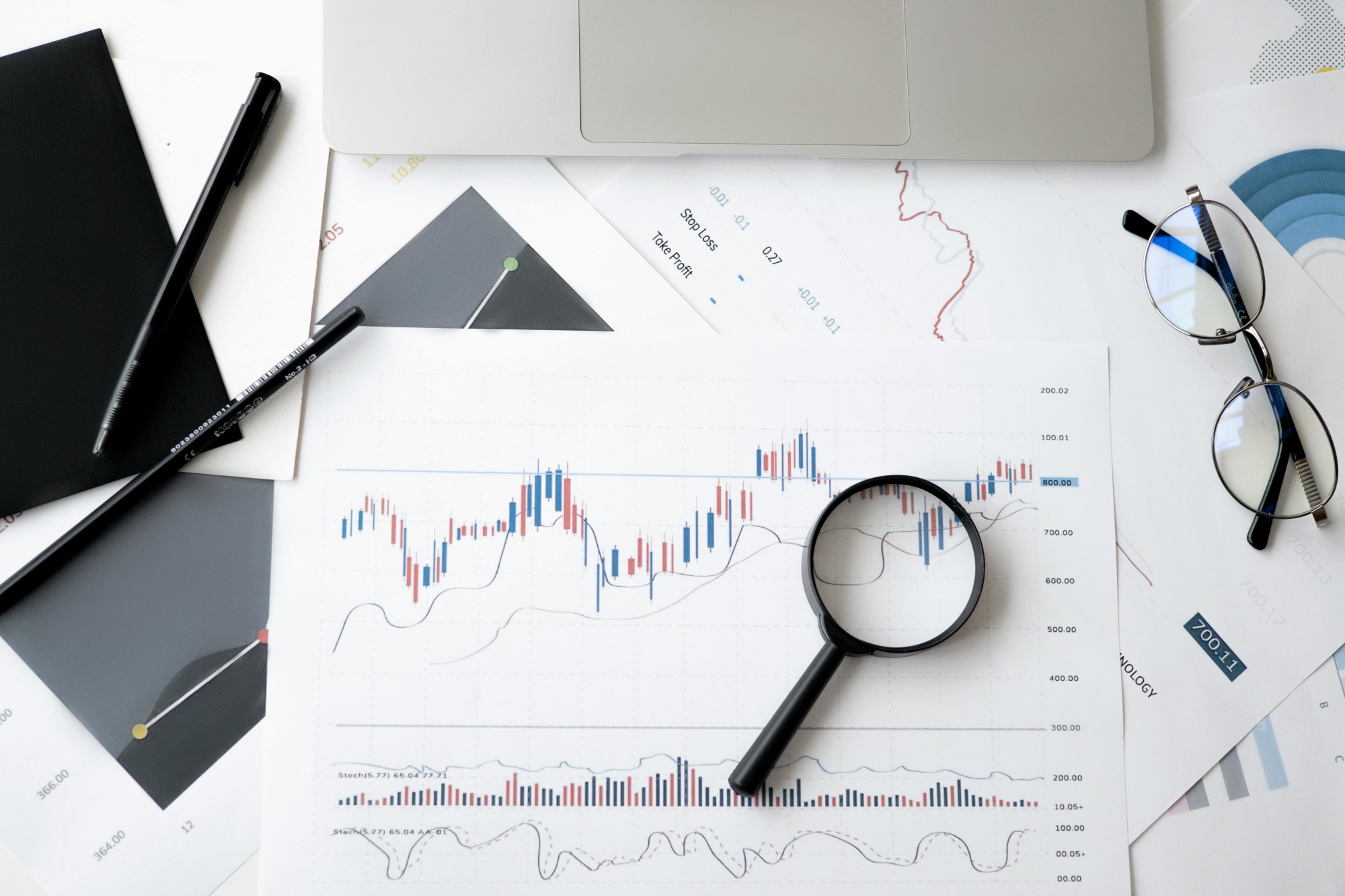Invest
Common mistakes in buying bonds that investors should avoid
The bond market is considered as a safe haven for Aussie investors and it’s easy to see why.
Common mistakes in buying bonds that investors should avoid
The bond market is considered as a safe haven for Aussie investors and it’s easy to see why.

Bonds have earned their safety reputation as they tend to offer the highest and most stable cash streams. There is also a persisting belief among bond investors that it’s the best vehicle for long-term savings.
Investing in bonds seems easy. But investing well in bonds is a different story. Bonds can be more complicated to handle than they appear to be, and it’s easy to make mistakes that can have costly consequences.
In this article, we’ll identify the most common mistakes in buying bonds that investors make and provide tips on how to avoid them to help you make better investment decisions.
1. Betting big on high-yield bonds
The biggest and most common mistake a bond investor can make is relying too much on high-yield bonds. While it’s true that high-yielding (junk) bonds look like a sweet deal, because they historically offer high returns, there’s still a downside to them.

Investors tend to reach for high-yielding bonds when interest rates are low or have recently declined. Another reason may be that they’re looking for higher yields than their current investments are providing.
But it’s important to remember that the bonds in a portfolio provide a solid brace or foundation. And while we’re not discrediting the importance of interest payment (yields) from bonds — they certainly are an important factor — you should view your bonds as a steady income provider for when your other investments (such as your stocks) undergo market downturns.
Unfortunately, junk bonds can’t provide this stability to your portfolio.
When the economy falters and stocks are hurt, junk bonds tend to also sink along with your other investments. Investment-grade bonds, such as Commonwealth Government Securities (CGS) and high-quality corporate bonds, usually can weather through difficult economic storms and may even climb in value when the going gets rough.
Do not be tempted by higher yields offered by bonds with lower credit qualities. Remember, yield is only one of the many factors that an investor should consider when purchasing a bond, and make sure not to forget that a bond with a higher yield comes with higher risk.
2. Overreacting to interest rate movements
Interest rates and bond prices are observed to have an inverse relationship. This means that as rates rise, bond prices decline, and vice versa. If you choose to invest directly in bonds, you should expect to experience fluctuations over the term of the bond as interest rates fluctuate. Many investors fail to prepare for the price volatility during the period before a bond’s redemption on its maturity date.
With this said, is there a way to protect against this price volatility? The answer is no. But there is a bright side to this: remember that patience pays off with equity investments. If an investor holds a bond to maturity, the bond’s full nominal value will be paid out. For this reason, you should be prepared to maintain your position until the actual date of redemption. If you have to sell before the maturity date, you may suffer a loss if the interest rate moves against you.
3. Paying too much attention to the yield curve
When the yield curve is flat or when the yield between short-term and long-term bond rates is almost the same, some investors make the mistake of switching from long maturities to short maturities. At first glance, this investment strategy makes perfect sense. Why bind your money and deal with the greater risk that comes with long-term bonds if you are not getting higher yields?
This is a common mistake that short-sighted bond investors make. Longer-term bonds still belong in your portfolio, even when the yield curve is flat or inverted (meaning that short-term bonds have higher yields than long-term bonds), which, thankfully, rarely happens.
As previously mentioned, you must remember that bonds in your investment portfolio provide stability when most of your other assets are experiencing a decline. If the economy weakens (which is usually when an inverted curve makes an appearance) and stocks suddenly hit the gutter, chances are that a good chunk of money will be poured into long-term, high-quality bonds. Interest rates will fall and long-term investment grade bonds will be coveted. Then you’ll have buyer’s (or rather seller’s) remorse and wish you were there to reap the gains.
4. Disregarding inflation
Inflation can significantly eat into your bond interest payments quite easily. So, when there’s reports of inflation trends, investors need to pay attention.
For example, if inflation rose at an annual rate of 4 per cent, it means that each year it will take a 4 per cent greater return to preserve the same level of purchasing power. This is important especially for investors that buy bonds at or below the current rate of inflation, because they are actually ensuring that they are gonna lose money when they purchase the security.
This doesn’t mean that an investor should steer clear of a low-yielding bond issued by a highly rated corporation. But investors should realise that in order to hedge against inflation, they must get a higher rate of return from other investments in their portfolio such as common stocks and bonds with high yields.
5. Picking a bond fund based on short-term performance
A bond’s performance in the short term (around one to three years back) may look impressive, but it may not mean anything significant. Usually, a fund’s short-term performance has more to do with the type of bond fund it is than with any investing prowess.
Let’s look at the performance of a high-yielding bond during a good year. During these times, even a high-yielding but weak-performing bond will likely see impressive figures. If foreign bonds saw a great year, foreign-bond funds would see a rally. If interest rates have recently fallen, all bond funds will look good in investors’ eyes.
So, don’t be blinded by the shiny, short-term figures. What matters isn’t the “raw” performance but a bond’s performance relative to similar funds. And most importantly, you should check the long-term performance of a bond, which can span to five years and beyond.
Learn everything you need to know about investing your money. With nestegg, you can get fresh, spot-on information about cryptocurrencies, mutual funds, properties, sharemarkets and other platforms you can use to invest your money effectively. Explore our website today or follow us on our social media channels!

Bonds
Institutional investors shift towards bonds amid market volatility
Institutional investors moderated their risk appetite in April, leading to a surge in demand for the US dollar and a retreat from riskier assets, according to the latest State Street Institutional ...Read more

Bonds
Boost in confidence: investor sentiment balances out in November
In the ever-evolving dance of market sentiment, institutional investors recently took a step towards optimism, as revealed by State Street Global Markets in their November update of the State Street ...Read more

Bonds
Investors take note: review portfolios as global bond surge mirrors 2008 crisis
Investors are being urged to scrutinise their investment portfolios as the global bond market experiences a rally not seen since the 2008 financial crisis. Read more

Bonds
Overstretched US dollar sets the stage for a financial correction in December
As the US bond market sees a robust rally, the financial landscape braces for an impending correction. Ipek Ozkardeskaya, Senior Analyst at Swissquote Bank, sheds light on the current economic ...Read more

Bonds
Sustainable bonds tipped to exceed US$1.5tn in 2022
The sustainable bond market is forecast to grow while overall bond issuance stagnates. Read more

Bonds
Corporate bond market review makes 12 recommendations to enhance investment
Twelve recommendations have been made to support the development of a more active corporate bond market in Australia. Read more

Bonds
Student files lawsuit over government bonds
A 23-year-old student has filed a lawsuit against the Australian government after alleging that it failed to disclose climate change-related risks to investors in the country’s sovereign bonds. Read more

Bonds
Bonds in the ‘new normal’ – navigating a recession
Dampening downside risk during a global economic downturn requires active management and informed decisions, writes Justin Tyler. Read more

Bonds
Institutional investors shift towards bonds amid market volatility
Institutional investors moderated their risk appetite in April, leading to a surge in demand for the US dollar and a retreat from riskier assets, according to the latest State Street Institutional ...Read more

Bonds
Boost in confidence: investor sentiment balances out in November
In the ever-evolving dance of market sentiment, institutional investors recently took a step towards optimism, as revealed by State Street Global Markets in their November update of the State Street ...Read more

Bonds
Investors take note: review portfolios as global bond surge mirrors 2008 crisis
Investors are being urged to scrutinise their investment portfolios as the global bond market experiences a rally not seen since the 2008 financial crisis. Read more

Bonds
Overstretched US dollar sets the stage for a financial correction in December
As the US bond market sees a robust rally, the financial landscape braces for an impending correction. Ipek Ozkardeskaya, Senior Analyst at Swissquote Bank, sheds light on the current economic ...Read more

Bonds
Sustainable bonds tipped to exceed US$1.5tn in 2022
The sustainable bond market is forecast to grow while overall bond issuance stagnates. Read more

Bonds
Corporate bond market review makes 12 recommendations to enhance investment
Twelve recommendations have been made to support the development of a more active corporate bond market in Australia. Read more

Bonds
Student files lawsuit over government bonds
A 23-year-old student has filed a lawsuit against the Australian government after alleging that it failed to disclose climate change-related risks to investors in the country’s sovereign bonds. Read more

Bonds
Bonds in the ‘new normal’ – navigating a recession
Dampening downside risk during a global economic downturn requires active management and informed decisions, writes Justin Tyler. Read more








